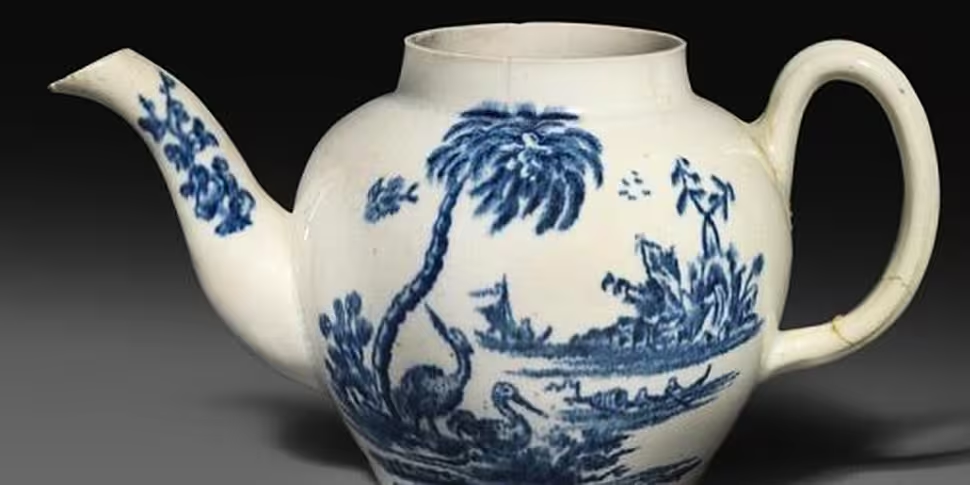A seemingly regular blue and white teapot has sold at auction in Britain for stg£460,000 (€522,707).
The American porcelain teapot is printed in underglaze blue, one side with two cranes beneath a tall palm tree beside figures in a sampan and a solitary figure in another boat.
The reverse side sees a version of the Man on the Bridge pattern, the eponymous structure linking small islands in a Chinese pagoda landscape.
The teapot is also missing its cover and has had its handle reattached.
It has only recently been identified as a piece of early American porcelain, believed to be part of a matched tea service that reached England in the late 1760s or 1770s.
It is also only the seventh recorded piece of John Bartlam's porcelain.
Scholars have recognised that Bartlam's porcelain was the first to be produced in America - which meant this auction was offering what is thought to be the oldest known American porcelain teapot.
Image: Woolley & Wallis Salerooms
Bartlam left England at around 1763 for South Carolina, but little is known of him before he travelled to America.
He set up business as a potter and established himself in Cain Hoy around 1765.
Auctioneers Woolley & Wallis, who sold the piece, say: "The move was a canny one - South Carolina was at the time one of the wealthiest and most fashionable, with residents vying to have the latest and finest ceramics shipped over from England.
"South Carolina was also part of the lucrative kaolin belt, which shipped Cherokee clay by the ton over to potters in the UK, including Josiah Wedgwood.
"In a letter to his partner, Thomas Bentley, in May 1767 Wedgwood writes, 'I am informed they have the Cherok[ee clay] to a Pottwork at Charles Town’; the potter in question undoubtedly being John Bartlam."
By 1768 it appears that Bartlam was having some financial difficulties and, based on a newspaper advertisement of the time, was looking to relocate his manufactory to Charlestown itself.
This he seems to have achieved by the end of 1770 - but the Charleston pottery failed and closed in 1772.
Bartlam relocated further inland to Camden, backed by a man called Joseph Kershaw, and continued to produce pottery there until his death in 1781.
The origninal estimate on the teapot was between stg£10,000 (€11,363) and stg£20,000 (€22,727).
The New York Times says the winning bid on Wednesday was made by a London dealer on behalf of the Metropolitan Museum of Art in New York.










